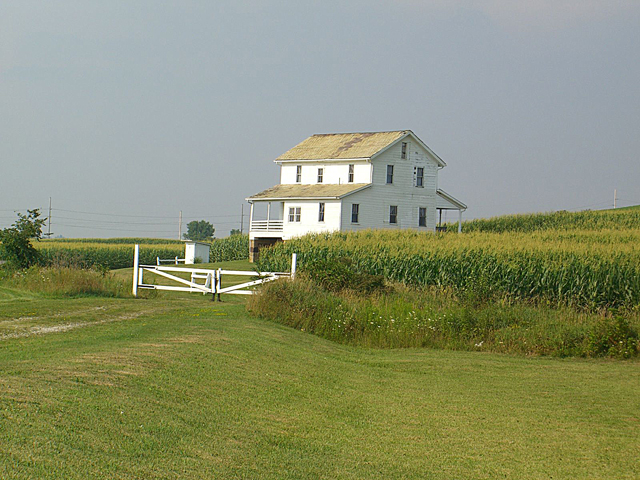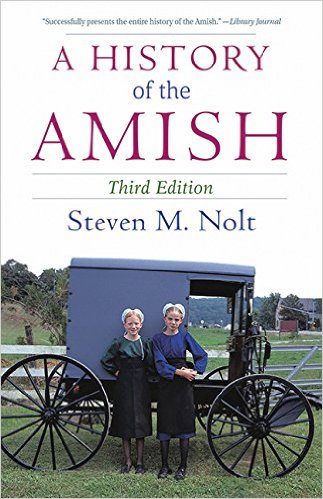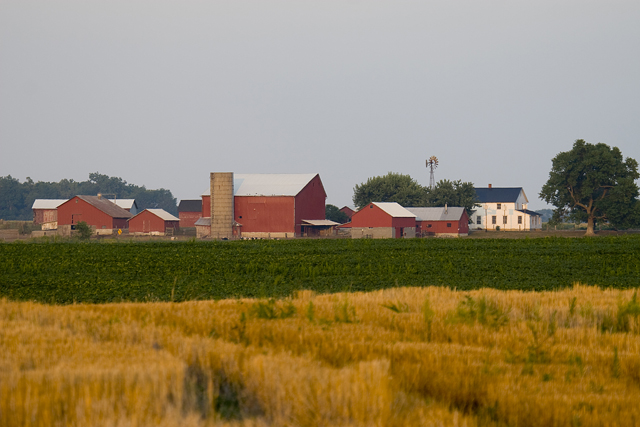Early Sunday morning last week, a black pickup truck paused in front of an Amish farmhouse in central Ohio and an occupant fired a single shot through the dwelling from a high-powered firearm. The vehicle drove another quarter mile, paused in front of another Amish home and the occupant fired again, another single shot, through that house.

The attacks took place along Codding Road, in southwestern Marion County near the Hardin County line, between 1:30 and 1:45 AM on Sunday morning, March 20. Since the Amish residents didn’t have access to telephones, the crimes were not reported to the authorities until late Monday afternoon, according to a news report in The Marion Star. Sheriff Tim Bailey of Marion County said that both houses were occupied by Amish families; fortunately, no one was hurt in either attack.
The sheriff had little additional information to release. He indicated that the shootings were definitely intentional acts, but he could not tell the caliber or what type of firearm was used. He has no idea of the reasoning, if any, behind the acts. He does not know if the shooter or shooters had been drinking, or if the shots were attempted murder. Mr. Bailey said that there have been no other incidents that targeted the Amish in that county, “so I’m not prepared to say that it was a hate crime.”
 The reporter for The Marion Star, Spenser Hickey, did some additional investigating and filed a follow-up story on Wednesday with more information about hate crimes against the Amish. Hickey interviewed Steven Nolt, a professor at Goshen College in Indiana, who has been the author or coauthor of numerous books, including, most recently, the third edition of his A History of the Amish (February 2016).
The reporter for The Marion Star, Spenser Hickey, did some additional investigating and filed a follow-up story on Wednesday with more information about hate crimes against the Amish. Hickey interviewed Steven Nolt, a professor at Goshen College in Indiana, who has been the author or coauthor of numerous books, including, most recently, the third edition of his A History of the Amish (February 2016).
Prof. Nolt told the journalist that he is familiar with the Amish in that part of Ohio. He did some fieldwork with the Kenton Amish community, which is located immediately to the west in Hardin County, and he assumes that the Codding Road Amish in Marion County are part of that group.
Nolt said that the Amish in Hardin County are more conservative than many other Old Order settlements, avoiding technology more than most. They prefer to live a more traditional lifestyle than a lot of Amish. The two previous hate crimes against the Amish that came immediately to mind were the Nickel Mines shooting in Lancaster County, Pennsylvania, in October 2006 and the beard and hair cutting incidents in Ohio instigated by Sam Mullet and his associates in October 2011.

Other than those two incidents, Nolt was not aware of hate crimes committed against the Amish from outside their communities. Furthermore, U.S. Federal Bureau of Investigation statistics for hate crimes in 2014 that were attributed to religious reasons did not include any crimes that specifically targeted the Amish, though 107 incidents reportedly were motivated by other religious issues.
Though not labeled as “hate crimes,” other nasty attacks on the Amish have appeared in news reports over the years. For instance, in July 2011 vandals attacked some Amish homes in Steuben County New York a series of times. According to a news report at that time, the vandals also attacked the homes of non-Amish people in the county, so the local sheriff would not label them as “hate crimes.”
Another crime committed against the Amish occurred in November 2013 when a man drove past a family riding home in their horse-drawn buggy in Lancaster County. For unknown reasons, the driver of the motor vehicle shot and killed the horse. Not a “hate crime” as defined by U.S. law, but an act of hate nonetheless. Perhaps these incidents should be categorized as “hate (the Amish) crimes.”